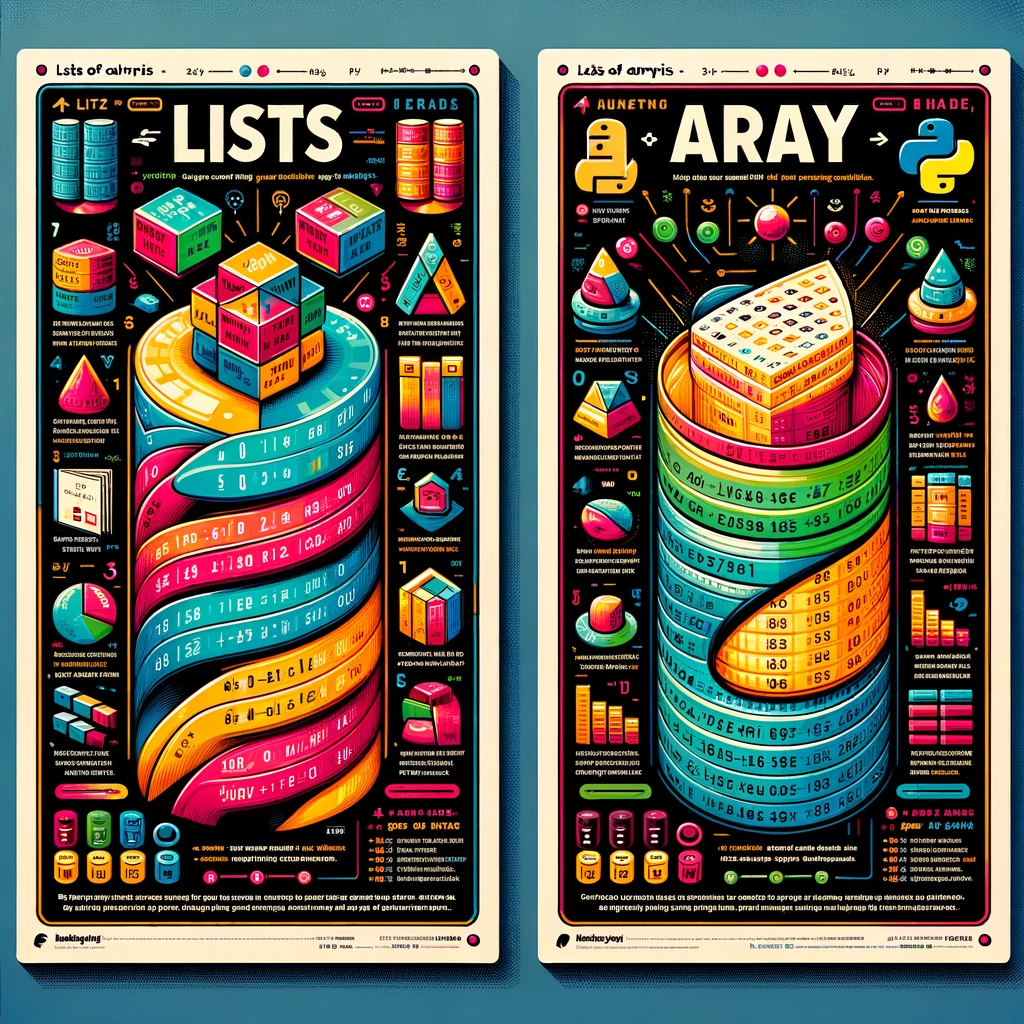Python is a versatile programming language beloved by both beginners and seasoned developers. It offers various data structures to store collections of data, with arrays and lists being among the most commonly used. While they might seem similar at first glance, there are crucial differences that can affect the performance, efficiency, and ease of use of your code. This article aims to clarify these differences through detailed explanations and practical code examples.
What are Lists in Python?
Lists are one of the most flexible data structures in Python, designed to store sequences of elements. They are dynamic, meaning they can grow and shrink at runtime, and they can hold items of different data types, including integers, strings, and even other lists.
Key Features of Lists:
Dynamic size
Heterogeneous elements (can contain different data types)
Mutable (can modify contents)
Practical Example: Creating and Modifying a List
# Creating a list
my_list = [1, "Hello", 3.14, [2, 4, 6]]
Adding an element
my_list.append(100)
Accessing elements
print(my_list[1]) # Output: Hello
Modifying elements
my_list[1] = "World"
Output the modified list
print(my_list) # Output: [1, 'World', 3.14, [2, 4, 6], 100]
What are Arrays in Python?
Arrays in Python, provided by the array module, are a collection of items stored at contiguous memory locations. The idea is to store multiple items of the same type together. This makes arrays more efficient for storing large amounts of data where the type of data is uniform.
Key Features of Arrays:
Fixed data type
Efficient storage and access
Suitable for numerical data operations
Example: Using an Array
from array import arrayCreating an array of integer type
my_array = array('i', [1, 2, 3, 4])
Adding an element
my_array.append(5)
Accessing elements
print(my_array[2]) # Output: 3
Modifying elements
my_array[2] = 30
Output the modified array
print(my_array) # Output: array('i', [1, 2, 30, 4, 5])
Lists vs. Arrays: When to Use Which?
Use lists when you need a collection of arbitrary objects, or when you're working with a mixture of data types. Lists are also the go-to choice for most typical data structure needs in Python, especially when the flexibility of data type and size is a priority.
Use arrays when the data is strictly numerical and you need to perform operations on the data efficiently. Arrays are particularly useful in scenarios involving heavy numerical computations, like data analysis or scientific computing, where memory efficiency and speed are crucial.
Best Practices and Use Cases
Lists: Ideal for storing collections of heterogeneous objects, iterating over items, and performing a wide range of list operations like slicing, concatenation, and manipulation.
Arrays: Best suited for numerical data operations, such as mathematical computations on arrays, storing large datasets of uniform type, and interfacing with C code.
Understanding the differences between arrays and lists in Python is fundamental for writing efficient and effective code. While lists offer unmatched flexibility for general-purpose programming, arrays provide a more specialized approach for numerical data operations. By choosing the right data structure for your specific use case, you can ensure your Python programs are not only functional but also optimized for performance.
Happy coding!
